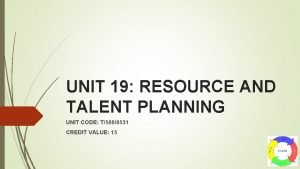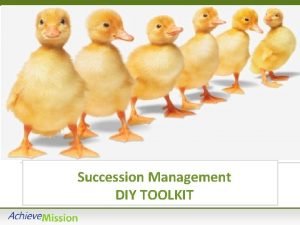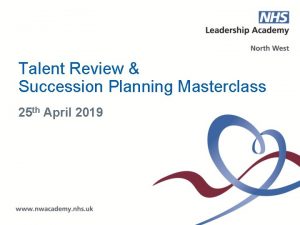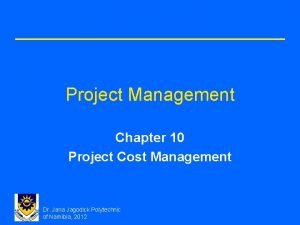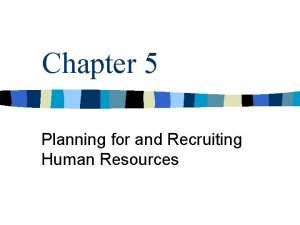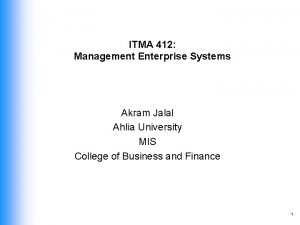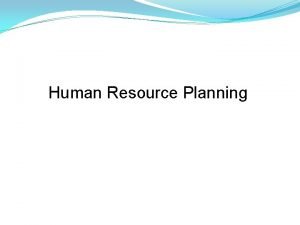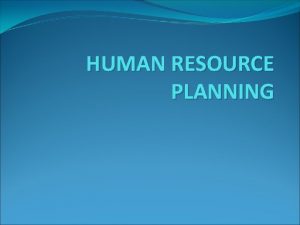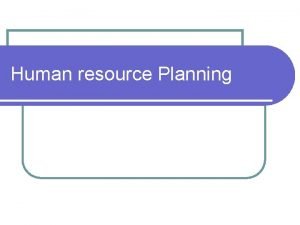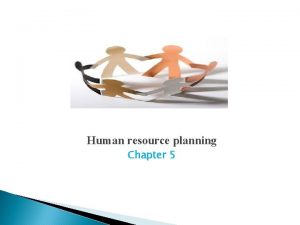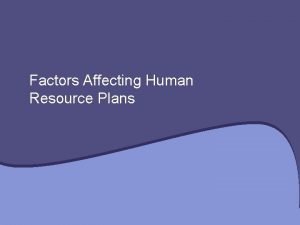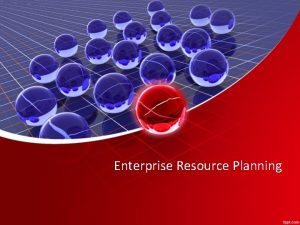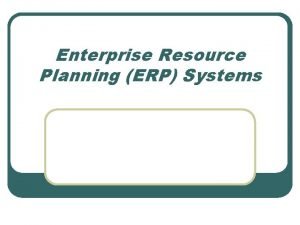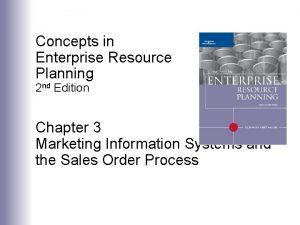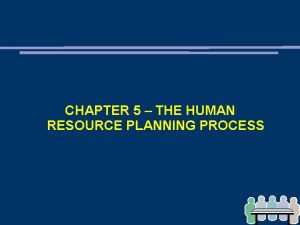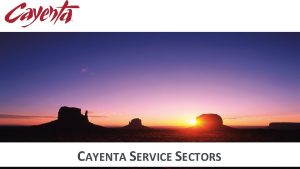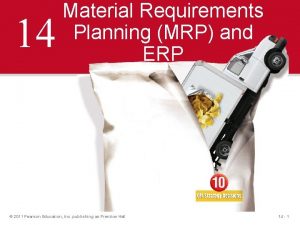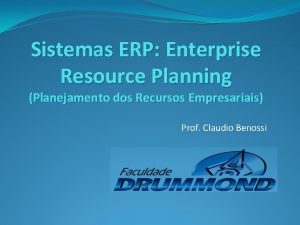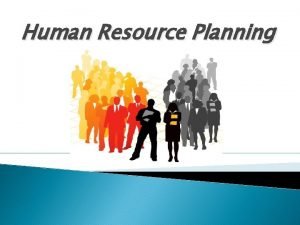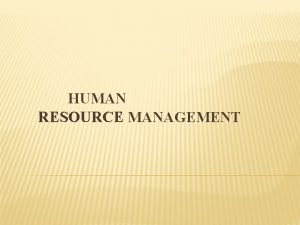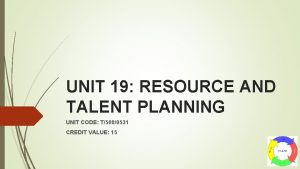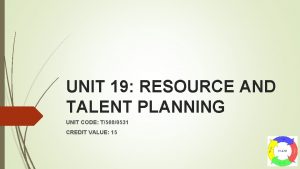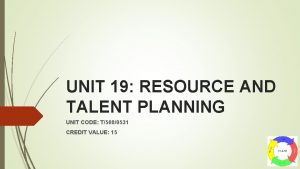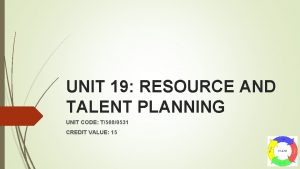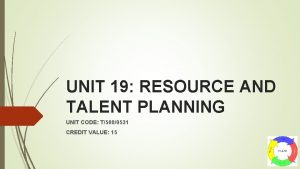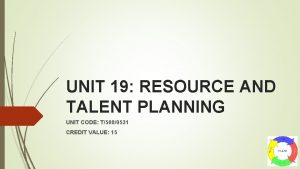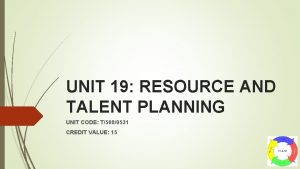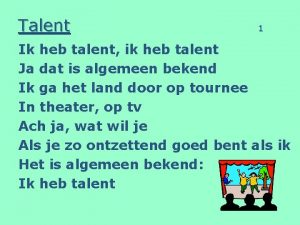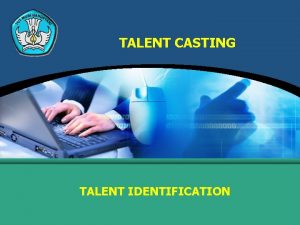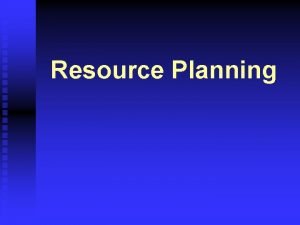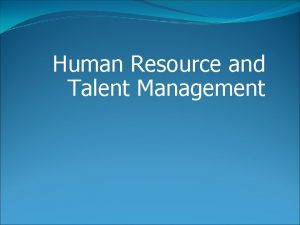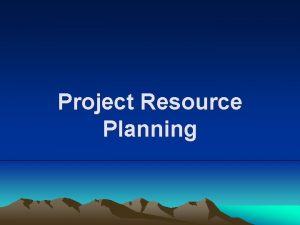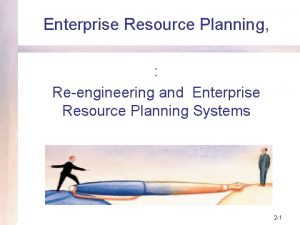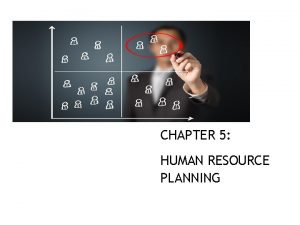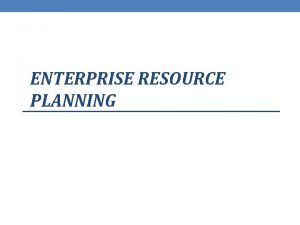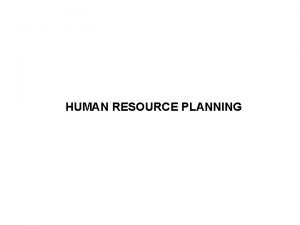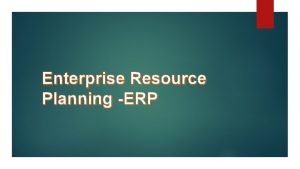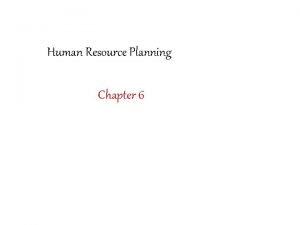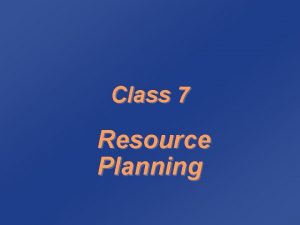UNIT 19 RESOURCE AND TALENT PLANNING UNIT CODE


























- Slides: 26

UNIT 19: RESOURCE AND TALENT PLANNING UNIT CODE: T/508/0531 CREDIT VALUE: 15

UNIT 19: RESOURCE AND TALENT PLANNING Learning Outcome 3: Apply the appropriate documents and processes which contribute to effective recruitment and selection.

THE BASIC SYLLABUS 1. Analyse labour market trends and appropriate legal requirements which influence workforce planning. 2. Determine current and anticipated skills requirements in varying contexts. 3. Apply the appropriate documents and processes which contribute to effective recruitment and selection. 4. Evaluate how to manage the human resource life-cycle within the context of a HR strategy.

LEARNING OUTCOMES Evaluate how to manage the human resource life-cycle within the context of a HR strategy P 6: Evaluate the stages of the HR life – cycle applied to specific HR contexts. P 7: Evaluate how stages of HR life-cycle are integrated within organizational HR strategy.

OVERVIEW The employee life cycle is a concept in human resources management that describes the stages of an employee's time with a particular company and the role the human resources department plays at each stage. Some models of the employee life cycle have five stages, while others have six or more.

STAGES OF THE HR LIFE CYCLE APPLIED TO SPECIFIC HR CONTEXTS

STAGES OF THE HR LIFE CYCLE APPLIED TO SPECIFIC HR CONTEXTS Like many other areas of life and business, human resources has a unique life cycle. However, instead of focusing on the biological aspects of development, the HR life cycle involves the stages employees go through and the role HR takes on during those stages.

STAGES OF THE HR LIFE CYCLE APPLIED TO SPECIFIC HR CONTEXTS • Recruitment Growing your business starts with hiring the right people. Hiring decisions play a critical role in turnover, productivity, and growth. In order to succeed in the recruitment phase of the HR life cycle, your human resources department needs to: • Create a strategic staffing plan that includes understanding positions that need to be filled, what will be expected of an employee, a strategy for attracting the best of the best, and other hiring concerns

STAGES OF THE HR LIFE CYCLE APPLIED TO SPECIFIC HR CONTEXTS • Analyze compensation and benefits packages to see if they’re competitive enough to attract the top talent • Develop an interviewing protocol, which may include written tests and multiple interview requirements, as well as a focus on active listening

STAGES OF THE HR LIFE CYCLE APPLIED TO SPECIFIC HR CONTEXTS Growing your business starts with hiring the right people. Hiring decisions play a critical role in turnover, productivity, and growth. In order to succeed in the recruitment phase of the HR life cycle, your company needs to: • Create a business staffing plan that includes understanding positions that need to be filled, what will be expected of an employee, a strategy for attracting the best of the best and other hiring concerns.

STAGES OF THE HR LIFE CYCLE APPLIED TO SPECIFIC HR CONTEXTS • Analyse compensation and benefits packages to see if they’re competitive enough to attract the top talent. • Develop an interviewing protocol, which may include written tests and multiple interview requirements, as well as a focus on active listening. • Genuine reference checks substantiate bonafide previous work performance.

STAGES OF THE HR LIFE CYCLE APPLIED TO SPECIFIC HR CONTEXTS Training models differ in terms of method, but all of them are intended to promote employee and organizational efficiency. Companies, however, have to be analytical in deciding which model to apply. On the job training is one of the popular models among companies looking for competent employees for vacant positions. Another model involves making candidates undergo test jobs.

STAGES OF THE HR LIFE CYCLE APPLIED TO SPECIFIC HR CONTEXTS Between the two, on the job training is better at getting accurate assessments of an applicant’s potential to perform well in the job because it is more comprehensive and covers longer periods.

STAGES OF THE HR LIFE CYCLE APPLIED TO SPECIFIC HR CONTEXTS Usually, close supervision and mentoring are extended as candidates carry out actual jobs where major mistakes can cost the company money and time. Companies often offer on the job trainings to new graduates with possible absorption of trainees who have displayed competence and are able to mix well with employees.

STAGES OF THE HR LIFE CYCLE APPLIED TO SPECIFIC HR CONTEXTS In this stage of the employment cycle, a supervisor evaluates and measures an employee’s performance. The review provides leaders and the employee specific metrics and helps determine if he or she is the right fit for the job.

STAGES OF THE HR LIFE CYCLE APPLIED TO SPECIFIC HR CONTEXTS Focus on the following: Employees should never be surprised by feedback on lesser standard work performance in an annual review process (or hearing it for the first time in the annual and formal review) • Challenge, support, and evaluate employees while offering constructive feedback on a regular basis (not just at evaluation time) • Conduct performance conversations based on facts, not on feelings • Spend more time discovering employees doing a good job rather than constantly criticising • Offer training and where appropriate professional development to help employees reach their goals and move further ahead in your company

STAGES OF THE HR LIFE CYCLE APPLIED TO SPECIFIC HR CONTEXTS • Three things every employee needs to understand as we all do; 1. What is my job? i. e. role clarity, standards and expectation’s 2. How am I going? i. e. two way feedback what is going well, opportunities for improvement 3. What is my future? i. e. whilst largely dependent on 1 and 2, it’s job security career growth

STAGES OF THE HR LIFE CYCLE APPLIED TO SPECIFIC HR CONTEXTS Succession Planning Model (SPM) has advanced from simply a ‘bolt-on’ to performance planning and reward processes to a fundamental platform for all strategic HR activities. To be effective, the SPM model must include strategies relating to the complete employee life cycle – retention, recruitment, performance and development.

STAGES OF THE HR LIFE CYCLE APPLIED TO SPECIFIC HR CONTEXTS Effective SPM systems can act as both talent development and talent retention strategies for the organisation, while providing important information for recruitment and performance management activities. “When recruitment, selection and retention strategies are added, succession management can look very much like talent management” (American Productivity and Quality Center, 2004; cited in Berke, 2005).

STAGES OF THE HR LIFE CYCLE APPLIED TO SPECIFIC HR CONTEXTS Career development opportunities are essential to keep an employee engaged with the company over time. After an employee has established himself at the company and determined his long-term career objectives, the human resources department must try to help him meet his goals, if they're realistic.

STAGES OF THE HR LIFE CYCLE APPLIED TO SPECIFIC HR CONTEXTS This can include professional growth and training to prepare the employee for more responsible positions with the company. The company also assesses the employee's work history and performance at this stage to determine whether or not he has been a successful hire.

STAGES OF THE HR LIFE CYCLE APPLIED TO SPECIFIC HR CONTEXTS Some employees will leave a company through retirement after a long and successful career. Others will choose to move on to other opportunities or be laid off. Whatever the reason, all employees will eventually leave the company.

STAGES OF THE HR LIFE CYCLE APPLIED TO SPECIFIC HR CONTEXTS The role of HR in this process is to manage the transition by ensuring that all policies and procedures are followed, carrying out an exit interview if that is company policy and removing the employee from the system. All of these stages can be handled internally or with the help of companies that provide services to manage the employee life cycle.

STAGES OF THE HR LIFE CYCLE APPLIED TO SPECIFIC HR CONTEXTS All cycles must come to an end—including HR life cycles. Sometimes it ends with retirement, leaving to return to school, leaving for more pay or better benefits, to tend to family responsibilities, or involuntary downsizing for economic or strategic reasons. Investing the time to do termination right is just as important a part of the employee lifecycle as recruiting, training, or development.

REFERENCES "Human Resources Life Cycle. " Smallbusiness. chron. com. N. p. , 2017. Web. 10 Nov. 2017. Airways. "Strategic Action Plan For Combating The Challanges Of HRM_V 1. 1. " Slideshare. net. N. p. , 2017. Web. 10 Nov. 2017. Jacoby, Margaret. "5 Stages Of The Human Resources Life Cycle In Need Of Improvement. " MJ Management Solutions. N. p. , 2017. Web. 10 Nov. 2017 "5 Stages Of The Human Resources Life Cycle In Need Of Improvement. " Huff. Post. N. p. , 2017. Web. 10 Nov. 2017. "Succession Planning & Management In Tough Economic Times. " Pageuppeople. com. . N. p. , 2017. Print. SALTMARSH, MERV. "5 Stages Of The Employment Life Cycle In Need Of Improvement. " Industrial Relations Report (2017): 8 -9. Print.

REFERENCES "Choosing Training Models For Your Training And Hiringneeds. : : Managing Human Resource Lifecycle. " Strategy 2 act. com. N. p. , 2017. Web. 10 Nov. 2017.
 Resource and talent planning
Resource and talent planning Talent review chart
Talent review chart Code commit code build code deploy
Code commit code build code deploy Talent review succession planning
Talent review succession planning Resource loading vs resource leveling
Resource loading vs resource leveling Perbedaan resource loading dan resource levelling
Perbedaan resource loading dan resource levelling Resource and cost planning
Resource and cost planning Short term human resources examples
Short term human resources examples Induction in human resource management
Induction in human resource management Chapter 5 personnel planning and recruiting
Chapter 5 personnel planning and recruiting Zero based forecasting
Zero based forecasting Enterprise resource planning example
Enterprise resource planning example Meaning of manpower planning
Meaning of manpower planning Human resource planning definition
Human resource planning definition Resource forecasting meaning
Resource forecasting meaning Steps of human resource planning
Steps of human resource planning Human resource management question papers with answers
Human resource management question papers with answers Factors affecting human resource planning
Factors affecting human resource planning Enterprise resource planning example
Enterprise resource planning example Application of enterprise resource planning
Application of enterprise resource planning Enterprise resource planning concepts
Enterprise resource planning concepts Forecasting techniques in human resource planning
Forecasting techniques in human resource planning Cayenta inventory management
Cayenta inventory management Lot sizing techniques in mrp
Lot sizing techniques in mrp Sistema erp adalah
Sistema erp adalah Human resource planning introduction
Human resource planning introduction Resource planning definition
Resource planning definition
